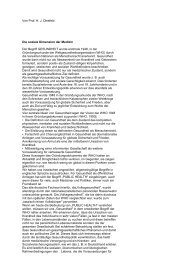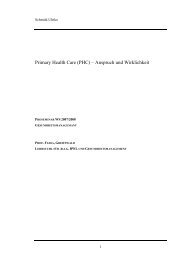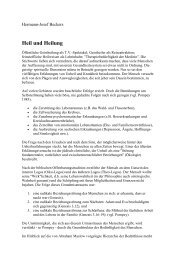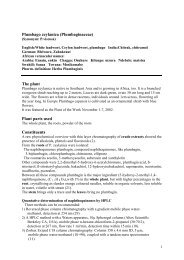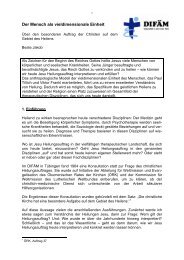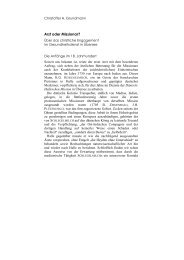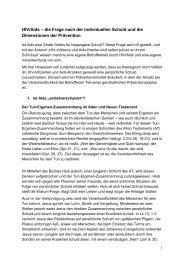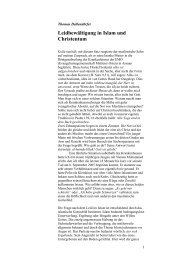(PHCII) - MMH/MMS
(PHCII) - MMH/MMS
(PHCII) - MMH/MMS
Create successful ePaper yourself
Turn your PDF publications into a flip-book with our unique Google optimized e-Paper software.
1.0. INTRODUCTION<br />
CHAPTER ONE<br />
1.1. BACK GROUND INFORMATION<br />
All women should have access to basic maternity care during pregnancy and delivery.<br />
This includes antenatal care, clean and safe delivery as well as postpartum care for<br />
mothers and infants (WHO 1997).<br />
Every time a woman is pregnant which happens as estimated 200 million times every<br />
year around the world, a woman risks a sudden and unpredictable complication that could<br />
result in her death or injury, and the death or injury of her infant. At least 40% of all<br />
pregnant women will experience some type of complication during their pregnancies.<br />
For about 15% this complication will be potentially life threatening. Such complications<br />
can occur in pregnancy, during labour, delivery and postpartum period that require high<br />
quality obstetric care, (Koblinsky et al 1993).<br />
Attempts to predict these complications before they occur have not been successful since<br />
most complications are unexpected and the majority of women with poor pregnancy<br />
outcomes do not fall into any high risk categories (Graham 1997 and Ahmad 1998).<br />
Therefore pregnancy should be viewed as a special period during which all women<br />
should take particular care and seek treatment for certain signs and symptoms (WHO<br />
1994).<br />
Basic maternity care comprises of quality antenatal care, clean and safe delivery whether<br />
the delivery takes place at home or in an institutional setting. One of the most important<br />
functions of antenatal care is to offer the woman advice information about the appropriate<br />
place of delivery given her own particular circumstances and health status. ANC is also<br />
an opportunity to inform women about the danger signs and symptoms for which<br />
assistance should be sought from a health care provider without delay (WHO 1994).<br />
1




